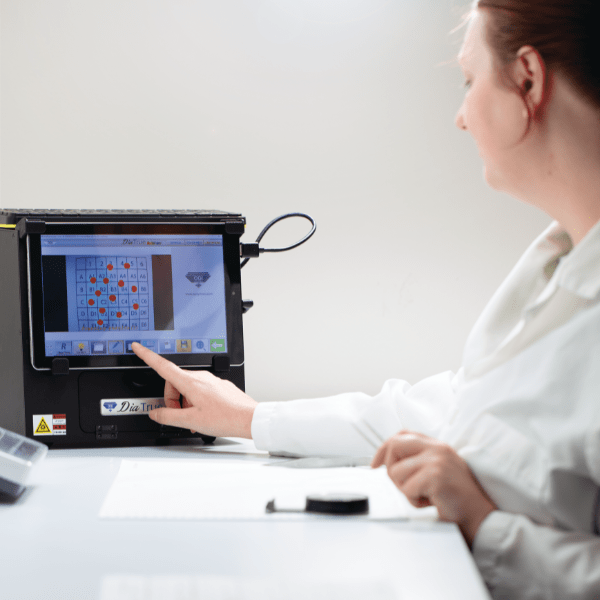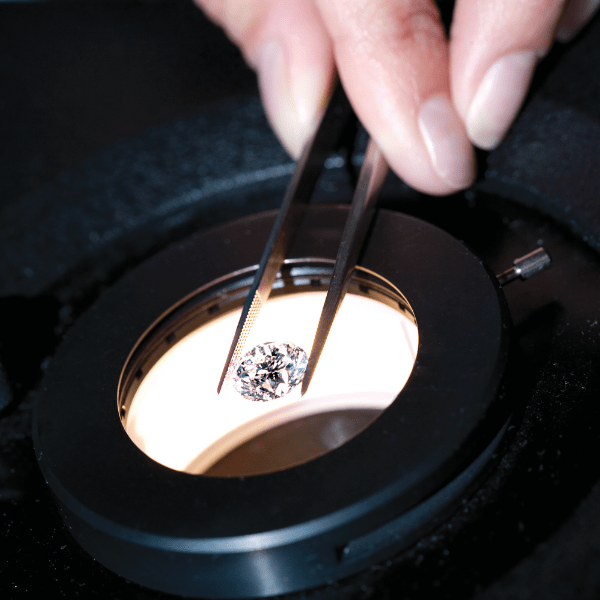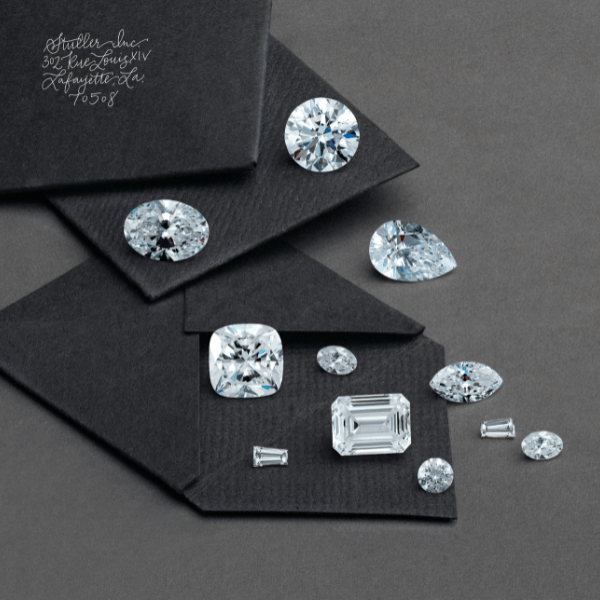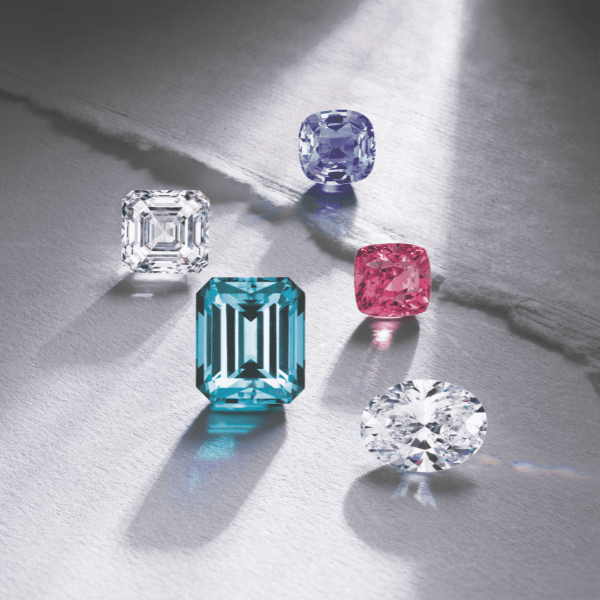Hurry Up, Sale Ends in
D |
H |
M |
S
Diamonds are an excellent investment and gift that will make your loved ones happy. So, it is important to understand about different diamonds before making your choices. The most important choice is to choose between natural and grown diamonds. There are very few differences between natural and lab-grown diamonds and you can choose one based on your need and requirements.
Recently, there has been an increase in the demand and supply of lab-grown diamonds. These are diamonds that are man-made and created under controlled circumstances. Lab-grown diamonds are good, environmentally friendly and cost less than natural diamonds. But some may prefer natural diamonds for their allure of rarity. Therefore, choosing lab-grown diamonds is a personal choice that depends on your needs, values, budget and aesthetics.
This brief overview comparing natural and lab-grown diamond jewellery will highlight key aspects such as the benefits, pricing, manufacturing processes, and other important factors, helping you understand all the essential differences between the two types of diamonds.
Deep within the Earth’s crust, when carbon atoms bond together under intense pressure and heat, natural diamonds form. In other words, there is a very high pressure and temperature under the earth’s surface that the carbon atoms are squeezed so much that they start touching more atoms. So, when the carbon atmos bond with four other atoms, they result in diamonds. This takes over billions of years to happen and the pressure that the carbon atoms undergo is about at least 50,000 times the pressure at the Earth’s surface. The temperature is approximately 1600 degrees Celsius. A lot of other natural processes happen before the diamond is actually formed. For instance, diamonds get transported to the Earth’s surface because of different natural occurrences like volcanic eruptions. It is one of the reasons why diamond is not found everywhere on the Earth. Based on the region they are formed in, the diamond too takes on different characteristics. It is mostly found in areas like Botswana, South Africa, Australia and the Democratic Republic of thee Congo. Australia is specifically known for their coloured diamonds.


The lab-grown diamonds were developed only some 70 years ago. They are made in a protected, monitored lab setting using advanced technology. There are two types of methods commonly used to mimic the natural diamond-forming process. One is called the High-pressure High temperature (HPHT) in which a small diamond or graphite piece is placed in a cube and given enough pressure and heat. The pressure that a diamond experiences deep within the earth is created within the cube and the carbon crystalises into a rough diamond in about 30 days.
Another common method is Chemical Vapor Deposition (CVD) where instead of a cube a sealed chamber is used. A small diamond or graphite piece is placed and a mix of carbon, oxygen and hydrogen gases is let in inside the chamber. When the molecular bonds of the gas break and carbon atoms deposit on the substance, a diamond will be formed slowly. The timing varies based on the desired size of the diamond.

Yes, lab-created diamonds are real diamonds and share similar properties to natural ones. They have shape, size, and clarity grades, just like natural diamonds. They both also have the same physical and chemical properties. There are no physical differences between lab and natural diamonds, but the former is made using a different method. The creation of both these diamonds is different and as a result, their prices are different. Natural diamonds have been existing for a long time but these lab diamonds were developed some 70 years ago. In addition, both lab-created and natural diamonds come with proper, verified diamond certifications.
Lab-grown diamonds are cheaper and easily formed while natural diamonds are rare and expensive. Here are a few differences between lab-grown diamonds and natural diamonds.
Formation - The formation is the basic difference between lab-grown and natural diamonds. While natural diamonds take billions of years and are formed organically under the surface of the Earth, lab-grown diamonds are formed in a conditional, protected environment. They replicate the natural conditions using technology.
Time - Natural diamonds take billions of years to form while lab-grown diamonds can be formed within just a few weeks.
Sustainability - Another difference between lab-grown diamonds and natural diamonds is the sustainability quotient of the diamonds. Some lab-grown diamonds use solar and hydro power which makes the diamonds sustainable. Whereas other lab-grown diamonds could be energy intensive and may not make for good sustainable options. Naturally-grown diamonds also require extensive mining facilities and are not entirely sustainable.
Grading - Both lab-grown and natural diamonds are graded the same way using the 4Cs - cut, carat, colour and clarity.
Identification - Both diamonds look the same to the naked eye. So, certified gemologists use cutting-edge technology to distinguish between a lab-grown diamond and a natural diamond.

Lab-grown diamonds are actually believed to be more ethical than natural diamonds because of their formation. However, it is not always guaranteed. Of course, mining the natural diamonds and utilising those resources leads to a depletion of natural resources at some point. However, all the lab-grown diamonds are not strong ethical alternatives. For instance, the ethical nature of lab-grown diamonds can vary based on their production methods. That said, lab-grown diamonds available at Sunshine Diamonds are those formed through ethical methods and sustainable practices.
A lab diamond will typically cost much less than a natural diamond. It will be at least 60% - 80% less than a natural diamond. The huge rate difference is majorly because these lab-grown diamonds are non-exhaustive and renewable. Most lab-grown diamonds are formed within two to four weeks while the natural diamonds take billions of years to be formed.
Choosing between natural or lab-grown diamond jewellery is a very individualistic preference. Some people prefer lab-grown diamonds because they have the same quality as natural diamonds but cost less. The affordability of lab-grown diamonds is an interesting factor that a lot of people prefer. However, a lot of people prefer natural diamond jewellery because they do feel lab-grown isn’t natural. The rarity of a diamond is what allures many people. So, they prefer the natural ones as it is rare and unique. So even as lab-grown diamonds are good, environmentally friendly and also cost less than natural diamonds, some may prefer natural diamonds for their allure of rarity. Therefore, choosing lab-grown diamonds is a personal choice that depends on your needs, values, budget and aesthetics.
Lab-grown diamonds are less expensive compared to natural diamonds. So, they are produced abundantly and are quite affordable. On the other hand, there are natural diamonds will carry the allure of being rare. Since both diamonds look almost too similar even a gemologist will need special measures to distinguish. Therefore, both lab-grown and natural diamonds have a strong future in the market, targeting different consumers. In essence, both diamonds are rich and valuable and have high demand and supply in the globe.
Natural diamonds are graded using the 4Cs - cut, carat, colour and clarity. Based on grading natural diamonds, every diamond is certified. Every diamond is certified so ask the vendor about its certification and you can tell if a diamond is real or not. Mostly used diamond certifications include certificates issued by the Gemological Institute of America (GIA) and the American Gem Society (AGS). They offer accurate certificates.
Lab-grown diamonds are graded just the way the natural diamonds are: using the 4Cs. These include colour, carat, clarity and cut. Independent, professional gemological organizations grade lab-grown diamonds just like how the International Gemological Institute (IGI) grades natural diamonds. The same criteria are used for both. The Gemological Institute of America (GIA) has ensured that both lab-grown and natural diamonds have standardized grading criteria, the transparency of which makes lab-grown diamonds also reliable and valuable.
Several people have this doubt. If lab-grown diamonds are real and worth buying, why exactly does it cost less than natural diamonds? The simple answer is that the time and cost of producing a lab diamond are comparatively less than mining and finding a natural diamond. Come to think of it, a diamond is expensive solely because it’s a rare gem and needs several processes to be mined and cut. The rarity of the gem determines the price. The concept of the lab-grown model is essentially a method to increase the quantity of diamonds available.
Plus early access to sales, birthday rewards & promotions.